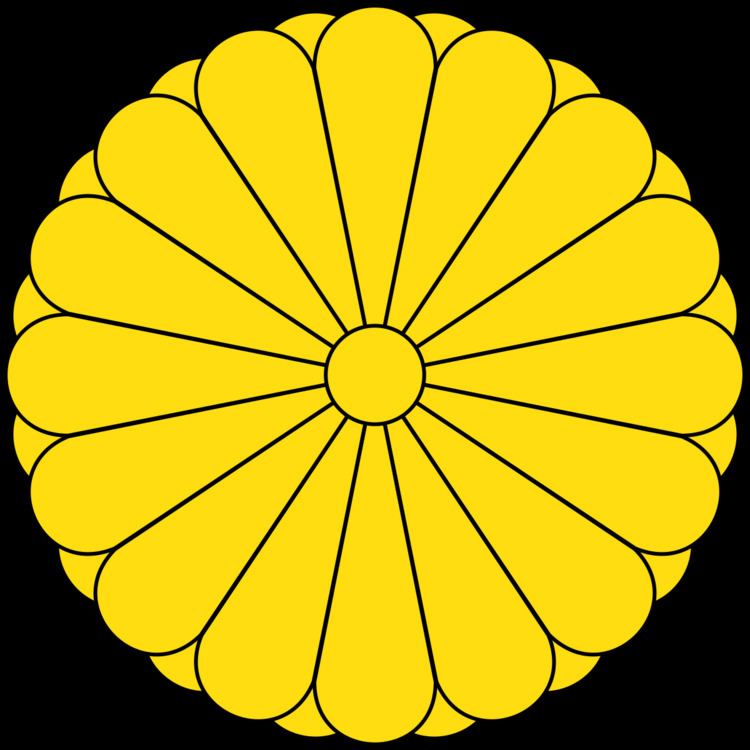Chancellor / Chief Minister Daijō-daijin Minister of the Right Udaijin Major Counselor Dainagon | Minister of the Left Sadaijin Minister of the Center Naidaijin Middle Counselor Chūnagon | |
 | ||
The Minbu-shō' (Japanese: 民部省, "Ministry of Popular Affairs") may refer to:
Contents
- Minbu sh Ritsury
- Ministerial authority under Yr Code
- Popular Affairs certificate
- Hierarchy
- Personages who held offices
- List of translated aliases
- References
- one of the Eight Ministries (八省) of the Japanese imperial court, established by the Taihō Code of the early 8th century, and continued under the Ritsuryō legal system.
- A short-lived ministry during the Meiji period (August–September 1869, August 1870 – September 1871).
Minbu-shō (Ritsuryō)
The ministry, established by the Taihō Code and Ritsuryō laws, was one of the Eight Ministries, in the wing of four ministries reporting to the Controlling Board of the Left (左弁官局, Sabenkankyoku) out of eight ministries. As the name indicates, this body was concerned with oversight over the affairs of the common people, viewed as taxable producers of goods. The ministry maintained various records: the population census sent from the provinces, cadastral (real estate) records, and tax accounting records.
Ministerial authority under Yōrō Code
The Yōrō Code (a revised version of the Taihō Code that created the ministry), stipulates the powers vested in the ministry, under its Official Appointments statute (職員令, Shikiin-ryō, "Article for the Ministry of Popular Affairs"). There it is stated that :
In the above "all provinces" does not include the capital. The census for the aristocracy who had clan names (uji or kabane) etc. was under the purview of the Jibu-shō (Ministry of Civil Administration). And the ministry was not "directly responsible for the upkeep of roads, bridgees, etc.," but merely kept such records for taxation and tax transportation tracking purposes.
Popular Affairs certificate
The ministry issued order certificates or charters called the minbushō-fu (民部省符, "Popular Affairs certificate") to officials and provincial governors (kokushi). The shōen system recognized private ownership of reclaimed rice-paddy lands, but did not automatically confer tax-exemption (as some misleading dictionary definitions suggest). From the early Heian period, the tax-exempt or leniency status was ratified by the certificate or charter (kanshōfu (官省符)) issued either by this ministry or the Great Council (daijō-kan) itself. (See kanshōfu-shō (官省符荘)).
In the Jōgan (貞観) period (859–877) occurred a breakdown of the Ritsuryō system under the Fujiwara no Yoshifusa regime, with authorities of the ministries absorbed by the Great Council. The decree of Jōgan 4, VII, 27 (August 826) essentially stripped the ministry of its control over the tax-leniency policy, ordaining that all applications for tax relief would be decided completely by the Great Council of State (daijō-kan), and its ruling delivered directly to the countries by the Great Council's certificate (daijō-kan fu). The ministry still issued certificates for exemptions on the shōen estates, but this was just rubberstamping decisions from above, as before. These changes in the exercise of administration were codified in the Jogan shiki (貞観式, "Procedures of the Jogan Era") and later Engishiki. The ministry was thus reduced to processing clerical responsibilities concerning the provinces.
Hierarchy
The Minbu-shō (民部省) was headed by the minister, whose office was ordinarily filled by a son or close relative of the emperor, of the fourth grade or higher.
Under the Ministry were two bureaus:
The Shukei-ryō, or Kazue-no-tsukasa (主計寮), the "Bureau of Computation" or "Bureau of Statistics." was in charge of two forms of taxes, the chō (調, "handicraft tax") and the yō (庸corvée). The yō was a form of conscripted compulsory labor, or more often the goods paid to be exempt from the obligation.
The Shuzei-ryō or Chikara-ryō (主税寮), the "Tax Bureau," was in charge of the third form of tax, the so (租, "land tax (paid by rice)"). The three forms of taxes were known as Soyōchō (租庸調) under the Ritsuryō system.
The Rinin (廩院) was an ancillary facility to this ministry that stored a portion of the corvée tax (yō of soyōchō) and nenryō shōmai (年料舂米, "yearly assessed polished rice"), which were distributed during ceremonies and functions.
